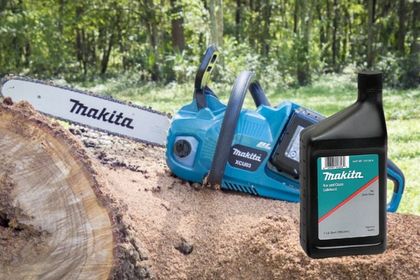As a chainsaw owner, you know that your machine needs oil to keep its engine running smoothly and efficiently. But what type of oil should you be using? The answer is not as simple as you may think.

Usually, most chainsaw manufacturers recommend using oils with a medium-high viscosity (or 30W-50W). These oils are typically labeled as “all-season” oils because they are suitable for use in both hot and cold temperatures without compromising performance or engine life.
With that said, it also depends on several factors including the type of engine in your chainsaw and the temperature range that you’ll be working in.
One thing that’s certain, though, is that viscosity plays an important role in selecting the right oil for your chainsaw. Let’s take a look at what viscosity is and why it matters when it comes to choosing the right oil for your saw.
What is Viscosity?
Viscosity measures how thick or thin a substance is, usually in terms of liquids such as oil. Generally speaking, higher-viscosity oils are thicker than lower-viscosity oils.
For example, 5W-30 motor oil has a lower viscosity than 10W-40 motor oil because it has less “weight” to it – that is, it flows more easily than the heavier 10W-40 motor oil.
The higher the viscosity, the thicker the liquid is and the slower it will flow. A low-viscosity oil, on the other hand, will be thinner and will flow more quickly. In general, you want to use an oil with high viscosity for your chainsaw because it will provide better lubrication and protection for its moving parts.
Why Does Viscosity Matter When Choosing Chainsaw Oil?
Chainsaws create a lot of heat as they operate and need an oil that can handle that heat without breaking down or evaporating too quickly. A high-viscosity oil will be able to withstand extreme temperatures without breaking down, which means it will be able to do its job properly and keep your saw running smoothly.
The viscosity of your chainsaw oil affects how well it can lubricate the moving parts inside your engine. If you use an oil with too high of a viscosity (i.e., too thick), then it won’t flow freely through the engine and won’t effectively lubricate all of its parts.
On the other hand, if you use an oil with too low of a viscosity (i.e., too thin), then it won’t provide enough protection against wear and tear on metal components like pistons and bearings.
So, when selecting an appropriate chain saw oil for your machine, make sure to pay attention to its viscosity rating so that you get the most out of your saw’s performance and lifespan!
How Do I Know Which Viscosity Is Right for My Chainsaw?
The best way to determine which viscosity rating is right for your particular chainsaw is by checking with its manufacturer or referring to their recommended guidelines for proper maintenance procedures.
Generally speaking, most manufacturers recommend using SAE 30 weight oil for small chainsaws and SAE 50 weight oil for larger ones. You’ll also need to take into account the ambient temperature that you’re working in, as this will determine which viscosity ratings are best suited for your machine.
In general, thinner oils are better suited for warmer temperatures while thicker oils are better suited for colder temperatures.
Ultimately, following these recommendations from either the manufacturer or other reliable sources should ensure that your chainsaw runs smoothly and safely at all times.
Final Thoughts
Choosing the right type of oil for your chainsaw is essential if you want to keep it running smoothly and efficiently. The viscosity of the oil you use can make all the difference when it comes to protecting your saw from wear and tear due to extreme temperatures and heavy loads.
When selecting a chain saw oil for your machine make sure to pay close attention to its viscosity rating as this will determine how well it can lubricate all of the moving parts inside your engine.
Higher-viscosity oils tend to be thicker while lower-viscosity oils are thinner; therefore, select an appropriate grade depending on both temperature range and manufacturer guidelines so that you get the maximum performance out of your saw.

